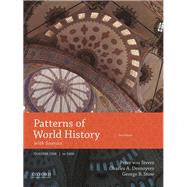Patterns of World History

Patterns of World History
- ISBN 13:
9780190697303
- ISBN 10:
019069730X
- Format: Nonspecific Binding
- Copyright: 09/01/2017
- Publisher: Oxford University Press Academic US
Rent
Sorry, this item is currently unavailable.



